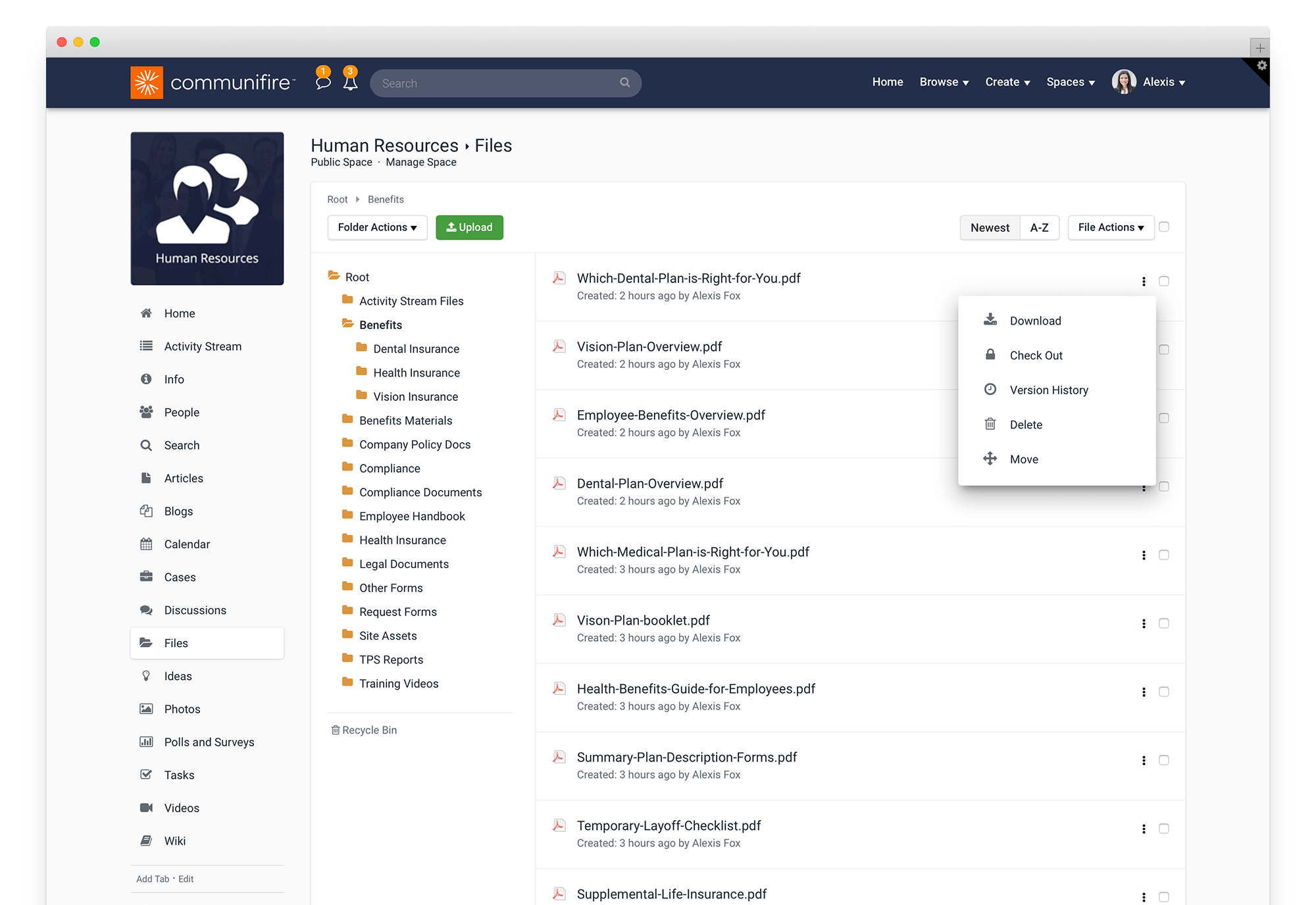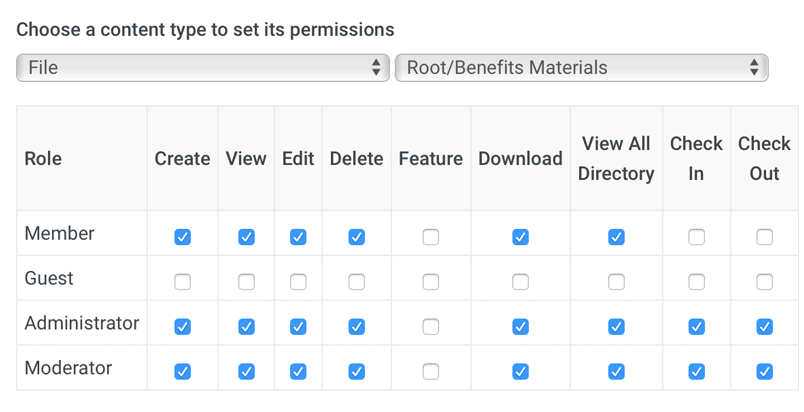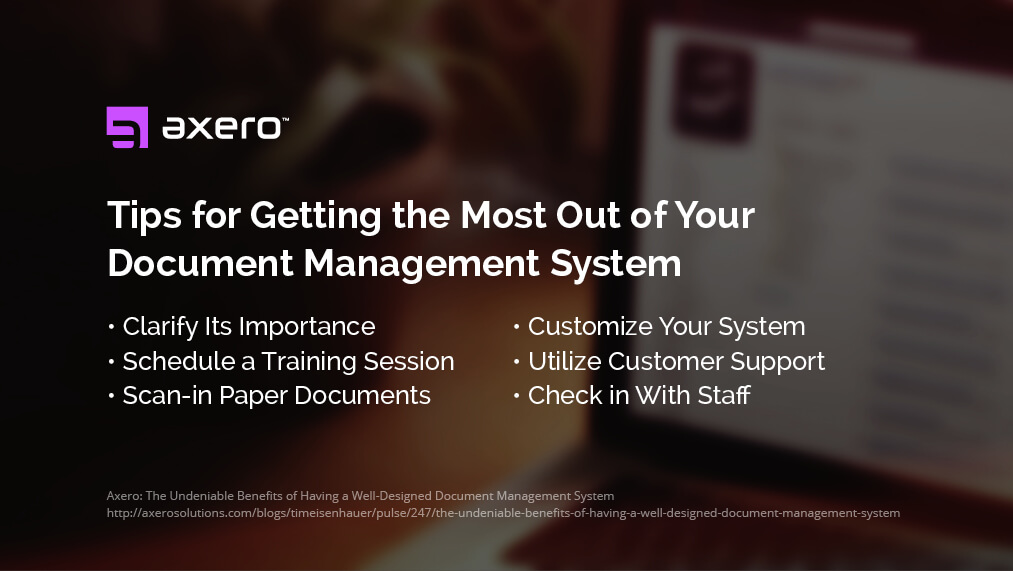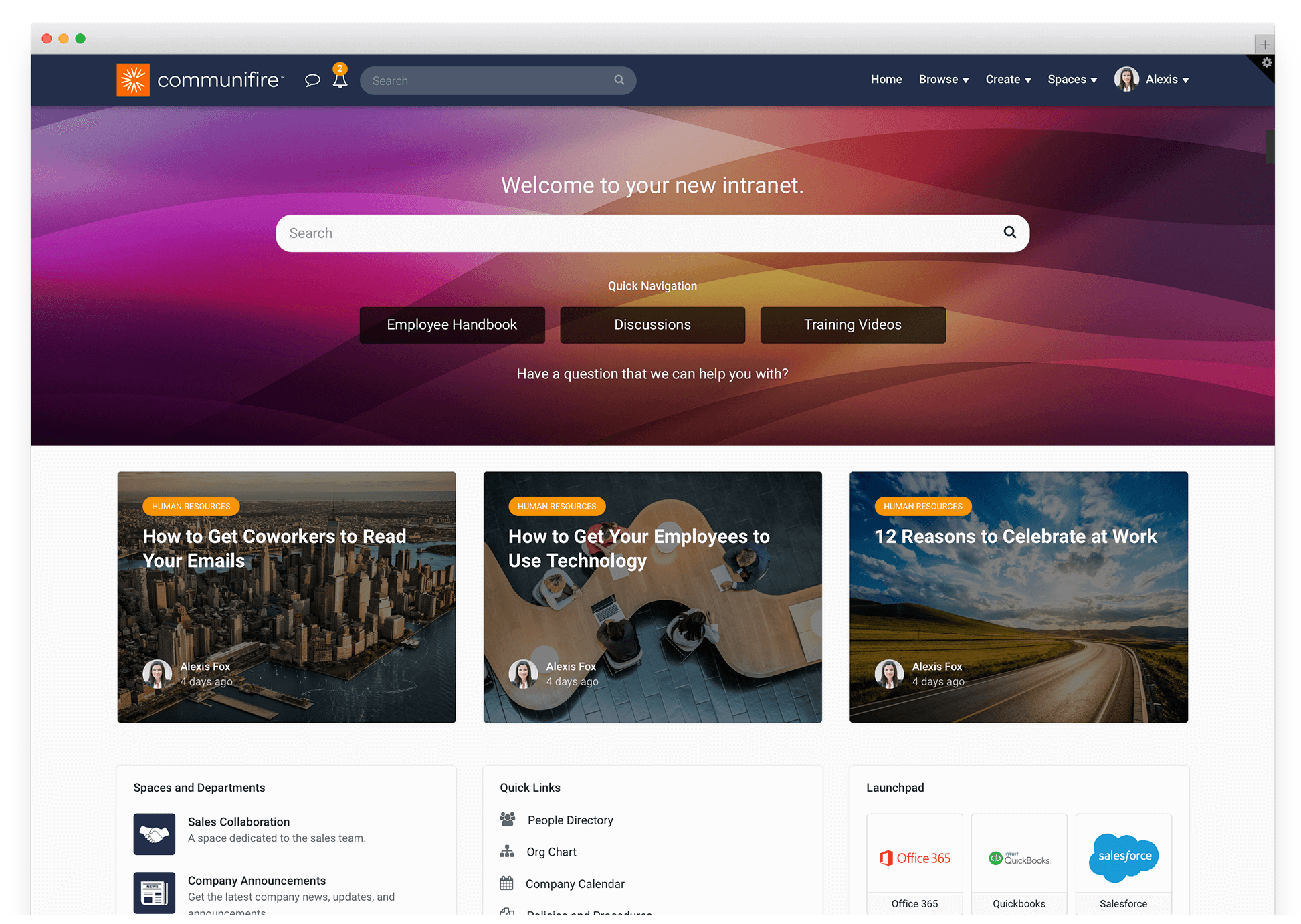Today’s businesses are up against more challenges. With the explosive influence of modern technology, organizations in just about every industry struggle with how to approach the workday in the most effective way possible. Knowledge management software is the number one tool organizations turn to, to store, share, and organize knowledge.
According to Gartner, professionals spend an average 18 minutes looking for one file. The use of paper documents or an archaic document management platform takes away from productivity. Knowing how to make the transition from paper to digital documents sets you up for long term success. There’s no better way to get things off the ground than to implement a well-designed document management system.
What is a document management system?
A document management system is a software that stores and tracks electronic documents. Modern document management systems are designed with functionality in mind and have a variety of features, like integrations, co-editing abilities, and social tools, that streamlines the entire process of storing and sharing knowledge.
Document management systems come in many shapes and sizes. Some are stand-alone, meaning they are programs designed with the sole purpose of assisting users with managing files and documents. Others are part of a robust suite with other business-related tools, including calendars, messaging, blogging, wikis, and case tracking. Commonly referred to as social business software, social intranet software, or collaboration tools, these suites are ideal for businesses looking for a singular vehicle to handle day-to-day operations.
Top 7 document management features you need today.

As you might expect, not all document management systems are created equal. There are plenty of differentiators that sets one vendor apart from another. Understanding what makes a well-designed platform and the document management trends that goes into them helps you select the right platform that will adapt with your organization over time.
When shopping for a document management system, consider its features and how they will drive your goals forward. Here are top standards to consider:
1. Cloud access.
These days, if it’s not in the cloud, does it really exist? Employees need the ability to upload, access, and download documents at any time and any place. This makes cloud access a must for document management systems. Look into what file storage looks like, if you have cloud and on-premise options, and how often vendors roll out updates. The biggest advantage of having a document management system in the cloud is it gives employees the freedom and ability to access files and collaborate from any location.
2. Intelligent organization.
Juggling documents and scattered platforms takes time away from the workday. (This is especially true for growing businesses!) The larger a company gets, or the more organizational change that takes place, chances are more likely that there will be more documents and data to organize. Organizational hierarchy is one of the most important features built into a document management system. Categorization, tagging, and rating will help you find the files you need as quickly as possible.
3. An attractive user interface.
Your staff is going to use your document management system on a daily basis, so you’ll want to make sure that the software is easy to use and features an attractive UI, or user interface. This is what you and your staff see when you login, which has the power to motivate employees and easily connect them to the information they are looking for. If your document management system is difficult to navigate, you will not make the most out of your investment and detract from productivity.
4. A robust search feature.
As your knowledge base fleshes out, you run the risk of document overload. It’s essential that your team is able to search and locate content. A robust search engine is an imperative document management feature that can help you easily and accurately browse your company’s knowledge base.
5. Version control.
As uploaded documents are always in flux, every company should have a document management system that features updates and different versions of files. Everyone has been in a situation where it’s nearly impossible to find the older version of a document. The best document management systems store every version of a document when it’s uploaded, allowing you to go back in its history before crucial changes were made, and add more value to the information you are storing.
6. Permissions.
If you have a huge staff, it can be difficult to keep a connected social community. Permissions will be your best friend, as they allow you to choose who has the ability to delete or change files, access certain spaces, and maintain communications. The best document management systems allow administrators to set specific permissions for every employee, which protects important documents from being altered, while also instilling a clear structure in your document management system.
7. Universal format support.
Anyone who has kept an eye on technology over the past few decades knows that file formats are constantly changing. Today, common extensions such as .pdf and .docx may dominate the professional world, but that doesn’t mean there aren’t other file formats. The more formats your document management system can support, the better. This will ensure that you won’t run into any issues down the road.
Top 11 document management system benefits.
The benefits of a document management system can have lasting and positive impacts on your business. Here are just a few of the most prominent benefits of incorporating a document management system:
1. Reduced physical storage.
If your office still relies on paper documentation, you know that extensive storage solutions are mandatory. With office space getting more expensive, you have options to eliminate this financial burden. Switching to a document management system allows you to scan and upload the paper that’s taking up office space, and swtich over to a more intuitive way of finding and organizing documents.
2. Lower costs.
Building a business can be difficult, especially when it comes to financial obligations. Modern business owners should do
everything possible to keep costs low, and one of the most effective ways to do this is to stop relying on paper. Paper can costly, especially when used as the main form for dispersing information. A document management system is not only more capable of handling the flow of information, but it can ultimately save you money.
3. Save time – Instant access to documents.
There’s a growing need in today’s professional climate for quick access to everything. Ignoring this need is the quickest way to fall behind. When documents are piled into filing cabinets, finding information on the fly can be exceptionally difficult. One of the major benefits of a document management system is that you and your staff can instantly access whatever documents you may need, regardless of where you are.
4. Advantage over other businesses.
It’s an unfortunate reality that many start-ups tend to fail within the first five years of being in operation. As you might expect, gaining a competitive advantage over other businesses is not only beneficial in today’s world, but also necessary. While it’s not always easy to identify ways to get the upper hand over the competition, implementing a document management system is a great way to start. Companies that fail to take this step will inevitably fall behind, leaving those which are well-prepared for the future to flourish.
5. Robust indexing of documentation.
Regardless of how well-organized a filing system you may have, there’s simply too much potential for error with physical documents. A document management system will provide you and your staff with robust knowledge management tools, like indexing capabilities, which allows you to know where everything is at all times. Even if you’re inundated with files, taking a moment to ensure proper organization is all it takes to stay on top of things.
6. Quick deployment.
If there’s one thing that causes CEOs and managers to be hesitant about implementing document management software, it’s that they don’t want to fall behind in the process. Switching to an entirely new method of managing files and documents can sound scary, but often for the wrong reasons. Deploying a document management system like Axero, where an implementation and support team is on your side, makes the process easier and ensures you reach you document management goals.
7. Improved customer service.
Keeping customers happy and focusing on customer service is essential to any business. Since a document management system can double as a company knowledge base, you give your customers instant access to any knowledge, troubleshooting tips, or documents you choose. This can solve problems far easier than wading through an ocean of paper documentation.
8. Simple updating process.
As the nature of software is always in flux, it’s essential that updates be completed as quickly and easily as possible. Document management software, like Axero, is the perfect solution for those who are no longer interested in updating software on their own. Updates occur in the background, ensuring that no valuable time is wasted in the process.
9. Higher levels of productivity.
Increasing productivity levels can be challenging because it’s not always easy to identify the issues that stand in the way. It’s important to take whatever steps necessary to increase productivity levels. Streamlining business processes falls squarely in line with this. When you and your staff use a document management system to manage and organize files, productivity levels will improve.
10. Air-tight security.
Even if you believe your documents are secure, there’s always a security risk. Security will always be a concern when documents make their way in and out of an organization—the fact that paper can easily be stolen or destroyed means that crucial documents could be compromised at any time. Security stands to be improved when you make the transition to a document management system, as versioning ensures that you never truly lose an original file.
11. Green business practice.
“Going green” is not only a popular trend, but it’s a necessity for a growing world. People everywhere are taking steps to lower their impact on the environment, and this philosophy extends to the world of business as well. Running a green business isn’t always easy, but one of the best ways to make lasting changes is to move towards a document management system. Thousands of paper per month can be saved, which translates into an environmentally-friendly business model, while reducing costs.
6 tips for implementing your new document management system.
No matter the scenario, transitioning to a new method of handling day-to-day business activities can be tricky. Fortunately, implementing a document management system like Axero is typically an easy process that doesn’t lead to any major headaches. There are also things that can be done to streamline the experience for your staff.
When preparing to implement a document management system, be sure to keep the following tips in mind:
1. Clarify the importance of making the transition.
When you decide to transition to a document management system, there’s always a chance that employees will question the reasons. If someone is set in their ways, they may need some convincing to try something new. By giving your staff background on the benefits of implementing a document management system, you take control over the narrative kick-off the process. You also dispel curiosities or concerns to get everyone alinged. Be sure to be responsive to the questions of your staff—the earlier you can iron-out any potential issues, the better.
2. Schedule a training session to teach your end users.
Even though document management software is easy to use, it’s important that your staff is well-versed on how to get the most out of the system. Document management systems work differently, and communicating these tips and tricks with your staff will ensure that launch and everyone’s success with the system goes smoothly. A training session doesn’t have to take long, and you can host them virtually, too. Be sure to schedule your training before the system goes into use to avoid potential user errors that might occur.
3. Scan-in paper documents, make them digital.
One of the first things you should do during implementation of a document management system is to take steps to move away from paper. This means scanning documents and uploading their digital versions into your document management system. While this can be a time-consuming process, the freedom that comes with moving away from paper is more than worth the effort. The process also gives you an opportunity to pick and choose which documents to hold onto and which ones can be eliminated. An easy way to do this is to digitize documents using an OCR tool, such as image to text converter. While the name says image, it can also digitize documents. This will automate the process and you won’t have to do much.
4. Customize your document management system.
One of the best things about using Axero as your document management system is that it can be fully-customized. Unlike a “one-size-fits-all” software, the look, feel, and functionality of Axero can be changed based on how you and your staff intend to use it. Once you take the time to customizatize your software—even if it’s just adding company colors, logos, or a customizable intranet template—you strenghten the connection between staff and your culture.
5. Take advantage of your vendor’s customer support.
No matter how well-versed you and your employees may be with using document management software, it’s essential to rely on customer support when necessary. At Axero, we proudly offer high-quality client support to each and every user. There’s nothing wrong with asking for help, and your organization will also benefit from doing so.
6. Check-in with your staff regularly.
Many CEOs and managers mistakenly believe that just because their staff has taken well to the implementation process that future issues will not arise. It’s always a good idea to check-in with your employees after implementing your new document management system—this will ensure that no one falls behind. The larger an organization, the more likely it is that some people might experience problems, which makes check-ins all the more important.
In conclusion.
The features and benefits that come with implementing a well-designed document management system can impact every part of an organization. The last thing you want to do is ignoring this reality in today’s competitive business climate. Set the paper aside — it’s time to take things to the next level.























 info@axerosolutions.com
info@axerosolutions.com 1-855-AXERO-55
1-855-AXERO-55


